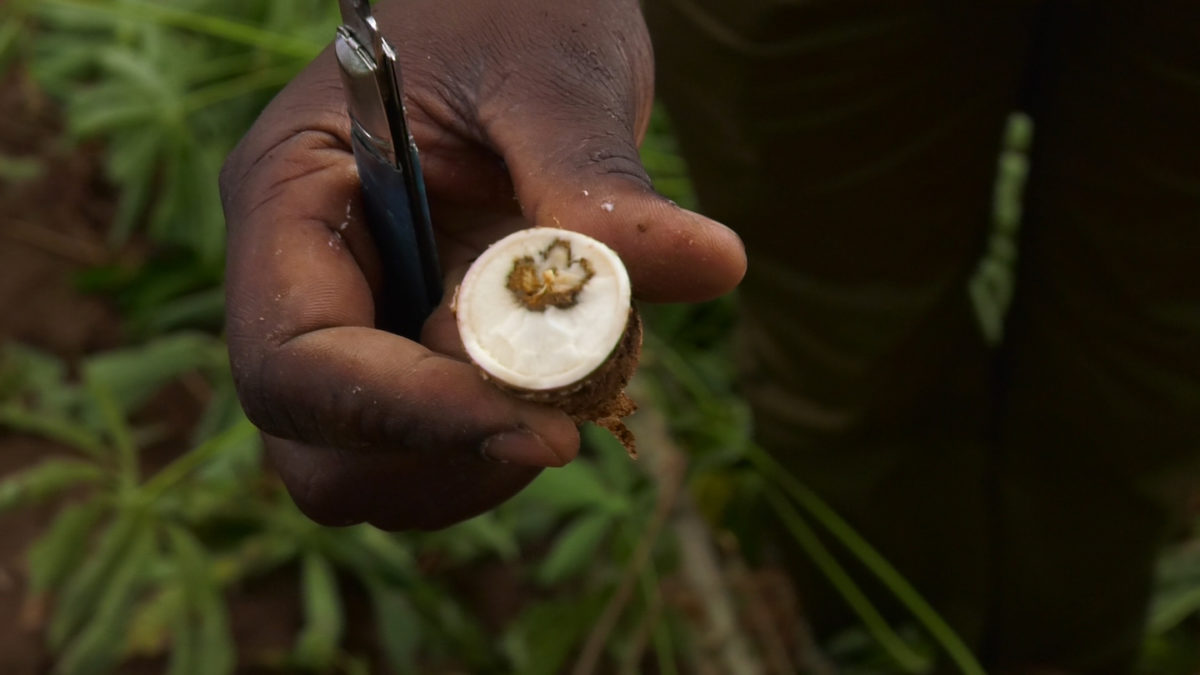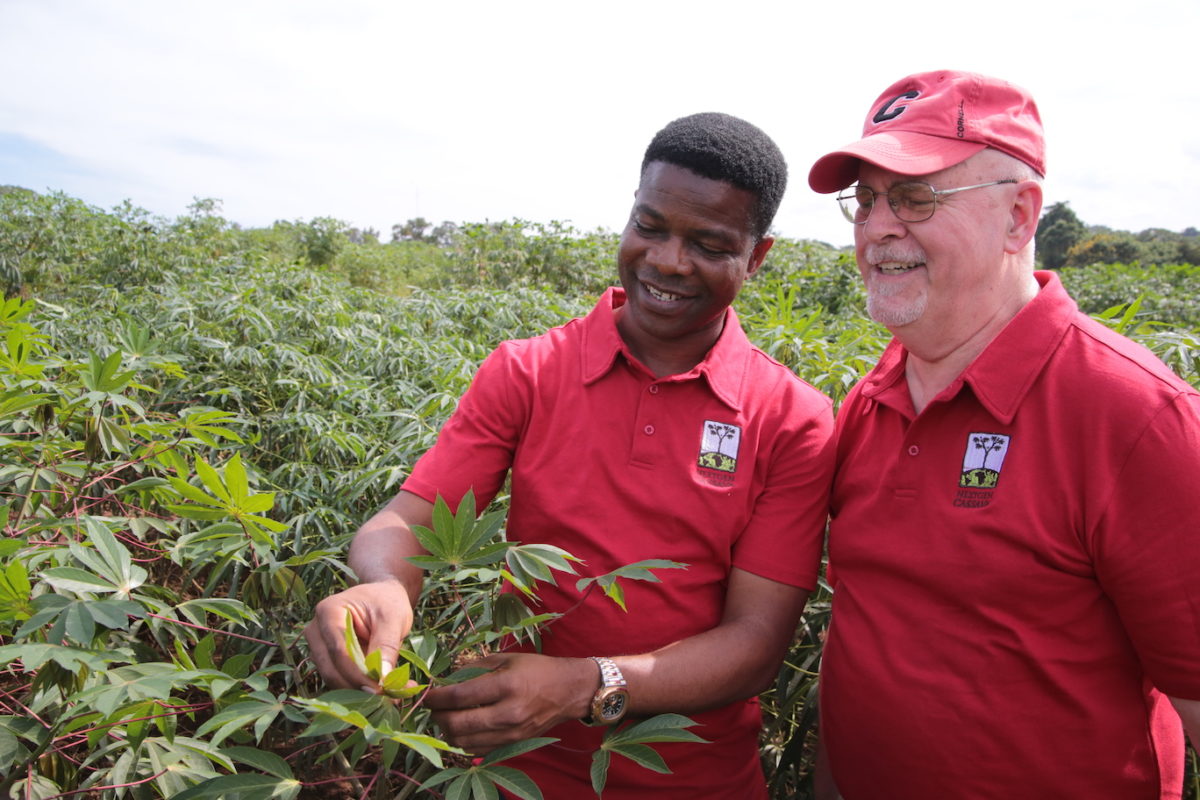Although considered an “orphan crop” because it is not traded internationally, cassava’s importance cannot be overstated in Africa. It is the fourth most consumed food staple in the continent after maize, rice and wheat.
The vital role of cassava was recently on display in Kampala, when scientists breeding the crop as part of the Next Generation Cassava Breeding project (NextGen Cassava) gathered in the Ugandan capital in February 2019 to discuss the project’s progress.
Funded by the Bill & Melinda Gates Foundation and UK aid, the NextGen initiative began in Uganda and Nigeria in 2012 with a focus on improving cassava using genomic predictions. It is now in its second phase, moving toward the delivery of improved varieties to smallholder farmers, thanks to an additional $35 million grant running through 2023. It has expanded to include Tanzania, and the project has initiated a community of practice partnership with cassava scientists in Rwanda, Zambia, Ghana, Ivory Coast and Sierra Leone.
As researchers gathered in Kampala, Dr.Titus Alicai, head of the root crops program at Uganda’s National Crops Resources Research Institute (NaCRRI), said that one of the project’s primary aims is to drastically reduce the time it takes to breed better varieties of cassava, going from 10 or more years to as little as four.
Cassava breeding traditionally has been difficult because scientists initially were crossing pollen from one plant to another to get seed for planting, which caused delays in delivering cassava cuttings to farmers, he said. Now researchers are using new technologies, such as grafting and applying chemicals to induce flower growth, to improve yield and other attributes, such as soft roots.
Alicai explained the importance of cassava to Ugandans, saying that they eat it fresh, make chips out of it and mix its flour into a number of foods, such as beef or fish stews, vegetables and beans. In Nigeria, it is also used to process eba, a stiff dough served alongside various soups and sauces, and other countries have their own preparations for cassava.
Cassava leaves are also cooked as a source of leafy green vegetable, while the flour is used for bread and other baked goods. Its starch is used to brew beer, and cassava can also be turned into glue, paper and other products.
With so many uses of cassava, it is no wonder scientists are concerned by the threats posed by cassava mosaic disease (CMD) and cassava brown streak disease (CBSD). These diseases, along with other challenges like pests and climate change, are the reason breeders across the globe are working to develop better varieties.

In Kampala, scientists discussed how they are collecting data for the purposes of making good selections during the breeding process and then carrying out laboratory tests to establish the plants’ performance in terms of resisting CBSD and CMD.
Dr. Ronnie Coffman, director of International Programs of the College of Agriculture and Life Sciences (IP-CALS) at Cornell University, noted that the progress African scientists are making in improving cassava breeding techniques is of vital importance to the welfare of smallholder farmers, many of whom live on less than $1 per day.

“It is estimated that half a billion Africans depend on cassava as a source of income,” he said. “The scientists here in Uganda breeding cassava have done a commendable job by providing a series of improved varieties to its farmers in order to earn a good living.”
Coffman said the NextGen project is a great model for training African scientists in the United States so they can go home and take a collaborative approach to innovating for Africa in agriculture. A case in point is Nigerian geneticist Chiedozie Egesi, who was recently appointed adjunct professor of plant breeding and genetics at Cornell University and serves on the Cornell Alliance for Science Advisory Board.
As a senior scientist at the International Institute of Tropical Agriculture (IITA) in Ibadan and project leader for NextGen Cassava, Egesi is leading a research team that is developing and releasing several improved varieties of cassava, including one fortified with vitamin A. His team collaborated with bioinformaticians at the Boyce Thompson Institute in Ithaca, New York, to establish Cassavabase, an open-access database of cassava genomic information that is publicly available to everyone in the world.
Five PhD students, including two from Uganda and two from Nigeria, are currently being trained in cassava breeding at Cornell University. Four students recently graduated.
Jim Lorenzen, the NextGen project program officer at the Bill & Melinda Gates Foundation, said at the Kampala meeting that although the foundation is putting a lot of money behind cassava research, it takes a hands-off approach when it comes to how scientists and breeders address the issue.
“My advice to you breeders is for you to do your work professionally and become breeding champions,” Lorenzen said. “Do your job to fulfill the demand and need of the consumers of your product. We will support strong breeding programs to help solve hunger challenges in vulnerable communities in Africa.”
